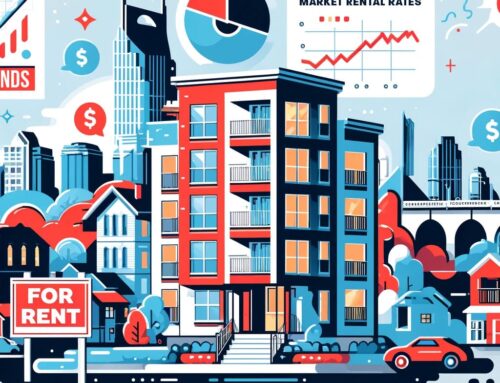What is Apartment or Multifamily Investing?
Apartment investing involves purchasing multifamily residential properties to generate rental income, build equity, and potentially achieve long-term appreciation. Apartment complexes can be good investments, offering passive income and wealth-building potential, but investors should align their decisions with financial goals, risk tolerance, and investment strategies.
First The Basics:
What is an Apartment Complex?
An apartment complex is a multifamily residential property that consists of multiple living units within a single building or across several buildings. These units can range from small duplexes and triplexes to large commercial properties with more than four units. Understanding the size and type of apartment complex that suits your investment goals is a crucial first step.
What Size Apartment Complex Should I Buy?
Small Multifamily Duplexes, Triplexes, and Quadplexes
Investing in smaller multifamily properties, such as duplexes, triplexes, or quadplexes, offers a more manageable entry point for new investors. These properties often provide a balance between affordability and potential returns.
Commercial Properties—More than Four Units
For investors seeking scalability and higher potential returns, commercial properties with more than four units become an attractive option. This category includes larger apartment complexes that can provide substantial cash flow and appreciation over time.
What About Single Family Rentals?
While not strictly part of apartment investing, single-family rentals are worth considering. They offer a different investment dynamic but can be a viable option for diversification within a real estate portfolio.
What is a “C-Class” Apartment?
Apartment class is connected to 2 main things. Condition plays the biggest role in determining apartment class.
What Are the Pros and Cons of Multifamily Investing?
 How Do Apartment Complexes Make Money?
How Do Apartment Complexes Make Money?
Apartment complexes make money primarily through rental income generated by tenants occupying the units, however there are additional sources of wealth generation that are less obvious to newer investors. These include forced and natural appreciation, debt pay down and other income sources connected with operating the property.
Rental Income
Rental income is money generated by having units leased out to tenants. This can take place on a long term (1-5 years) or a short term basis. Airbnb is a well known short term income generating platform for multifamily apartments. You must adhere to local laws and ordinances. The rents collected each month from tenants make up what is called the “Rent Roll.” This document can be kept manually on paper but is more often than not a spreadsheet or integrated into property management software.
Appreciation
One of the largest contributors to multifamily profits is the appreciation of the real estate assets. This can take place in two ways. Natural appreciation happens as the over all real estate market increases in value over time. This is based upon what people are willing to pay for a property and can create very large gains over the years especially when gentrification or development is taking place nearby. It is important to note that these capital gains are taxable only when the property is sold.
Forced appreciation happens when commercial properties (5+ units) increase their Net operating income through an increase in rent or a reduction in expenses. For this reason maintaining an accurate rent-roll and books is critical for real estate investors as it can prove the actual value of a property.
Debt Pay-down
In addition to the cash flow generated by the tenants of your multifamily property, you are receiving the added benefit of debt pay down. This means that your loan principle amount is being paid down every month by the tenants and not you personally as the owner. The true benefits of this come when you want to acquire more properties. You are able to borrow more money to help pay down your next multifamily property creating an effective cash snowball.
Other Income Sources
The last way apartment complexes make money is by collecting payments on other amenities or facilities your apartment may possess. For example if your buildings do not have in unit laundry, creating a coin laundry facility not only adds a valuable convenience to your tenants but also makes you money in the process. The same can be done with gym or pool facilities, storage units, vending machines and more. These other income sources will not eclipse the need for quality renters paying at or near market rates, however it increases your apartment complex value, thus building your over all net worth.
How Do I Start Investing in an Apartment Building?
Is it Better to Buy or Build an Apartment Building?
Deciding between buying an existing apartment building or building one from the ground up depends on various factors. While building allows for customization, buying an established property may offer quicker returns. Consider your goals, budget, and risk tolerance when making this decision.
Find a Property
If you’ve decided to buy a property instead of building you will need to be able to quickly evaluate the property value. For this we always recommend consulting an expert, however looking at other properties in the area that are comparable will be a good start. Sites like Crexi or loopnet are listing services for multifamily and commercial properties. In addition, real estate agents will often keep pocket listings of off market deals.
What are the Red Flags for Buying an Apartment?
Identifying red flags is crucial to avoiding problematic investments. Red flags may include high vacancy rates, signs of deferred maintenance, unfavorable market conditions, or unclear or incomplete financial records. Thorough due diligence is possible to mitigate these risks.
How Do You Calculate an Apartment’s Value?
Calculating apartment value involves assessing key financial metrics such as cap rate, cash-on-cash return, and overall return on investment. Understanding these metrics helps evaluate the property’s profitability and potential for long-term success. In addition you must look at comparable in the area to know what sort of cap rate to expect.
What is the 1% Rule in Real Estate?
The 1% rule, a widely used guideline in real estate, proposes that a rental property’s monthly gross income should equal at least 1% of its purchase price. Though not rigid, it serves as a useful tool for investors to swiftly evaluate potential cash flow prospects. Understanding this rule empowers investors, including those exploring multifamily investments, to make informed decisions when assessing the viability of apartment complexes as lucrative ventures.
Conclusion: Is it a Good Investment to Buy an Apartment?
In conclusion, apartment complexes can indeed be good investments, providing a source of passive income and long-term wealth. The decision to invest in apartments should align with your financial goals, risk tolerance, and investment strategy. By understanding the fundamentals of apartment building investing, evaluating potential risks, and leveraging financial metrics, you can make informed decisions to navigate the dynamic world of real estate investment successfully.
FAQs
What is the Average Profit Margin for an Apartment Complex?
The average profit margin for an apartment complex varies, but successful properties typically achieve a profit margin of 8% to 12% of the property’s value. This margin considers rental income, operating expenses, and property management costs.
What is the Rate of Return on Apartment Buildings?
The rate of return on apartment buildings is commonly measured through metrics like cash-on-cash return and overall return on investment (ROI). These metrics consider the net income generated by the property relative to the initial investment.
What is Cap Rate in Real Estate?
Cap rate, or capitalization rate, is a critical metric in real estate investment. It represents the property’s potential return on investment and is calculated by dividing the property’s net operating income (NOI) by its current market value.






